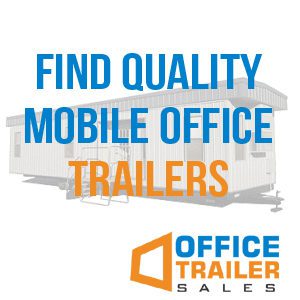
Top Safety Measures Construction Sites Should Never Overlook
Construction sites are inherently hazardous environments where workers are exposed to various risks daily. Ensuring the safety of everyone on-site is paramount, not only to protect workers but also to ensure project efficiency and compliance with legal standards. This comprehensive guide explores top safety measures that construction sites should never overlook, with a special focus on the role of office trailers in enhancing safety and operational efficiency.
Importance of Safety on Construction Sites
Before delving into specific safety measures, it’s essential to understand why safety is critical on construction sites. Worker protection is the primary goal of safety measures, aiming to shield workers from accidents and injuries. Adhering to safety regulations prevents legal issues and potential fines. Additionally, a safe work environment reduces downtime caused by accidents and improves productivity, thereby enhancing the reputation of the construction company and attracting skilled workers.
1. Comprehensive Safety Training
Proper training is the cornerstone of any safety program. All workers, regardless of their experience level, should receive thorough training on safety procedures and best practices.
- Initial Training: New hires should undergo a comprehensive safety orientation covering site-specific hazards, emergency procedures, and safe work practices.
- Ongoing Training: Regular refresher courses and training sessions on new equipment and updated safety protocols ensure that all workers stay informed and vigilant.

2. Personal Protective Equipment (PPE)
Personal Protective Equipment (PPE) is essential for protecting workers from site-specific hazards. The correct PPE must be provided and used consistently by all workers.
Essential PPE items include:
- Hard hats to protect against head injuries from falling objects
- Safety glasses or goggles to shield eyes from debris and chemical splashes
- Ear protection to prevent hearing loss in noisy environments
- Gloves to protect hands from cuts and chemical exposure
- High-visibility clothing to ensure workers are visible
- Safety boots to prevent foot injuries
3. Fall Protection
Falls are one of the leading causes of injuries and fatalities on construction sites. Implementing effective fall protection measures is crucial.
Fall protection systems should include:
- Guardrails: Install around open edges, holes, and elevated platforms.
- Safety Nets: Use to catch falling workers and debris.
- Personal Fall Arrest Systems: Equip workers with harnesses and lifelines when working at heights.
4. Site Security and Access Control
Controlling access to the construction site is essential for preventing unauthorized entry and ensuring the safety of both workers and the public.
Site security and access control measures should include:
- Fencing: Erect sturdy fencing around the site perimeter.
- Signage: Post clear signs indicating restricted areas and hazards.
- Security Personnel: Employ security guards to monitor site access and patrol the area.
- Visitor Protocols: Implement procedures for logging and escorting visitors.

5. Safe Use of Machinery and Equipment
Proper use and maintenance of machinery and equipment are critical for preventing accidents and ensuring efficient operation. All operators should be trained and certified to use specific machinery. Regular inspections and maintenance checks on all equipment are necessary to ensure safety features like guards and emergency shut-offs are functioning correctly.
6. Proper Material Handling
Handling materials safely is essential to prevent injuries and ensure the integrity of the materials being used. Workers should be trained on proper lifting techniques to avoid strain injuries, and mechanical aids like forklifts and cranes should be used for heavy lifting. Materials should be stored securely to prevent falls and spills.
7. Fire Safety
Construction sites are vulnerable to fire hazards due to the presence of flammable materials and electrical equipment. Fire safety measures should include:
- Fire Extinguishers: Place at strategic locations.
- Emergency Exits: Ensure clear and accessible exits.
- No Smoking Zones: Designate smoking areas away from flammable materials.
- Fire Drills: Conduct regular fire drills to prepare workers for emergency situations.
8. Health and Hygiene
Maintaining health and hygiene standards is vital for preventing illness and promoting a healthy work environment.
Health and hygiene practices should include:
- Sanitation Facilities: Provide adequate toilets, handwashing stations, and clean drinking water.
- Break Areas: Designate clean and comfortable break areas for workers.
- First Aid: Keep a well-stocked first aid kit and ensure trained first aiders are available on-site.
9. Effective Communication
Clear communication is essential for coordinating activities, reporting hazards, and responding to emergencies. Equip supervisors and key personnel with communication devices such as radios and mobile phones. Hold daily safety briefings to discuss ongoing work, potential hazards, and safety reminders. Use signs and notices to communicate important safety information effectively.

10. Office Trailers for Safety and Efficiency
Office trailers play a vital role in enhancing safety and operational efficiency on construction sites. These portable buildings serve as central hubs for management, planning, and coordination activities, contributing to a safer and more organized work environment.
Benefits of Office Trailers
Office trailers provide a centralized location for site managers and supervisors to coordinate activities, monitor progress, and communicate with workers. They serve as command centers for coordinating emergency response efforts and ensuring that all workers are accounted for in the event of an emergency. Office trailers offer dedicated spaces for conducting safety training sessions, briefings, and meetings, ensuring that workers receive consistent and effective safety information.
Additionally, office trailers can be equipped with first aid supplies and serve as treatment areas for injured workers, providing immediate medical attention when needed. They provide secure storage for important documents, safety equipment, and emergency supplies, ensuring that these resources are readily available and protected from theft or damage. Office trailers also offer comfortable and climate-controlled workspaces for site managers and administrative staff, improving productivity and focus.

Implementing Office Trailers on Construction Sites
To maximize the benefits of office trailers on construction sites, consider the following implementation strategies:
- Location and Placement: Place the office trailer in a central location that is easily accessible to all workers, ensuring it is situated on stable ground and away from high-risk areas. Position the office trailer to provide a clear view of the site, allowing managers to monitor activities and spot potential hazards.
- Equipment and Furnishings: Equip the office trailer with communication tools such as radios, phones, and computers to facilitate effective coordination and communication. Stock the office trailer with first aid kits, fire extinguishers, and emergency supplies to enhance safety preparedness. Furnish the office trailer with comfortable seating, desks, and climate control systems to create a productive and comfortable work environment.
- Integration with Site Operations: Use the office trailer as a hub for coordinating all site operations, including scheduling, resource allocation, and safety management. Conduct regular safety meetings and briefings in the office trailer to ensure that all workers are informed about potential hazards and safety protocols. During emergency drills, use the office trailer as a command center to practice and refine response procedures.
Ensuring safety on construction sites requires a multifaceted approach that includes comprehensive training, proper use of PPE, effective fall protection, site security, safe machinery operation, proper material handling, fire safety, health and hygiene, and clear communication. Office trailers play a crucial role in enhancing safety and operational efficiency by providing a centralized command center for coordination, emergency response, training, and secure storage.

Leave a Reply